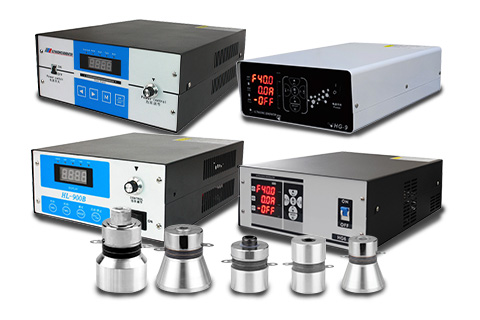Introduction
Cleaning technologies have evolved dramatically in recent years, especially in precision-driven industries such as medical device manufacturing, automotive parts restoration, electronics, and jewelry maintenance. Among these technologies, ultrasonic cleaning has emerged as a revolutionary solution compared to traditional cleaning methods like manual scrubbing, brushing, or soaking in chemical solvents.
This article provides a side-by-side comparison of ultrasonic cleaning and traditional cleaning methods. You’ll discover how each method works, their pros and cons, and which one best fits your application. Whether you’re managing an industrial process or operating a small repair shop, understanding the right cleaning method can improve efficiency, extend product life, and reduce operational costs.
What Is Ultrasonic Cleaning?
Ultrasonic cleaning uses high-frequency sound waves (usually between 20 kHz to 80 kHz) transmitted through a liquid, typically water mixed with a specialized cleaning solution. These sound waves create microscopic cavitation bubbles, which implode with tremendous force to remove contaminants from the surface of objects—even in blind holes, cracks, and intricate geometries.
Key Components of an Ultrasonic Cleaning System:
Ultrasonic generator – Supplies the high-frequency electrical signal
Transducers – Convert electrical energy into mechanical vibrations
Cleaning tank – Holds the solution and objects to be cleaned
What Is Traditional Cleaning?
Traditional cleaning methods encompass a wide range of manual and semi-automated techniques, including:
Hand scrubbing with brushes or cloths
Soaking parts in solvents or detergents
Pressure washing or rinsing
Spray cleaning
These approaches rely heavily on physical force, chemical reactions, and time to break down contaminants.
Ultrasonic vs. Traditional Cleaning: Feature-by-Feature Comparison
1. Cleaning Efficiency
Ultrasonic Cleaning: Provides uniform cleaning across all surfaces, including hard-to-reach areas. Ideal for components with complex shapes.
Traditional Cleaning: May miss crevices and internal features. Relies on manual effort, which can be inconsistent.
2. Time Consumption
Ultrasonic Cleaning: Faster cycles. Typically 5 to 20 minutes depending on contamination.
Traditional Cleaning: Time-consuming, especially for detailed parts.
3. Labor Intensity
Ultrasonic Cleaning: Minimal labor needed. Just load, run, and unload.
Traditional Cleaning: Labor-intensive; requires constant human oversight.
4. Environmental Impact
Ultrasonic Cleaning: Uses eco-friendly solutions and less water. Reduces chemical waste.
Traditional Cleaning: Often depends on harsh chemicals and larger volumes of water.
5. Precision and Effectiveness
Ultrasonic Cleaning: Extremely effective for delicate and sensitive items.
Traditional Cleaning: May scratch or damage sensitive surfaces.
6. Running Costs
Ultrasonic Cleaning: Higher upfront cost, but lower operating and labor costs.
Traditional Cleaning: Lower setup cost but higher labor and supply expenses over time.
When to Use Ultrasonic Cleaning
Ultrasonic cleaning is ideal for:
Intricate components with internal channels or blind holes
Parts with tough contamination (grease, carbon, rust)
Industries that require high cleanliness standards (e.g., medical, aerospace, optics)
When Traditional Cleaning Still Works
Traditional cleaning remains useful for:
Large surfaces where precision is less critical
Quick wipe-downs or field maintenance
Applications with low cleanliness requirements
Real-Life Case Study: Automotive Restoration Shop
Background: An auto parts restoration business used manual scrubbing and solvent soaking to clean carburetors and cylinder heads.
Challenges:
Employees spent 30–45 minutes per part
Inconsistent results and chemical handling risks
Solution: Switched to an industrial ultrasonic cleaner with a 40 kHz frequency generator.
Results:
Reduced cleaning time to 10–15 minutes per part
Enhanced cleanliness and part longevity
Improved worker safety and morale
Product Recommendations
If you’re ready to upgrade to ultrasonic cleaning, consider the following options:
For Jewelry and Small Components:
Model A-28K – 28 kHz analog ultrasonic generator with compact tank
For Automotive or Industrial Use:
Model X-40D – 40 kHz digital ultrasonic generator with timer and power control
Custom Tanks with Multiple Transducers – For large-volume operations
Be sure to match your transducers and tank capacity with the generator’s frequency and power output.
Frequently Asked Questions (FAQ)
Q1: Is ultrasonic cleaning safe for all materials? A: While it’s safe for most metals, ceramics, and plastics, avoid using ultrasonic cleaners on very soft stones (e.g., opals) or porous materials unless verified by the manufacturer.
Q2: Do I need special cleaning solutions? A: Yes. Using the correct ultrasonic cleaning solution enhances cleaning power and protects your equipment and parts.
Q3: Can ultrasonic cleaners remove rust? A: Yes, when combined with a suitable rust-removal solution, ultrasonic cleaners can effectively remove surface rust.
Q4: How often should I replace my ultrasonic generator? A: Most last between 3–8 years depending on usage. Signs of failure include inconsistent cavitation, no power, or overheating.
Q5: Can I clean electronics using ultrasonic cleaning? A: Yes, as long as the electronics are non-powered and dried properly post-cleaning. Always consult your equipment manual.
Summary Table: Ultrasonic vs. Traditional Cleaning
| Feature | Ultrasonic Cleaning | Traditional Cleaning |
|---|---|---|
| Cleaning Depth | Reaches intricate and hidden areas | Limited to external surfaces |
| Labor Requirement | Minimal | High |
| Chemical Use | Low (eco-friendly solutions) | Often high |
| Damage Risk | Low (gentle) | Higher for delicate parts |
| Operation Time | 5–20 mins per cycle | 30–60 mins per cycle |
| Long-term Cost Efficiency | High | Lower initially, but costly later |
Final Thoughts
Ultrasonic cleaning outperforms traditional cleaning in most precision applications, offering greater efficiency, safety, and consistent results. While traditional methods still have their place, especially in low-demand or field applications, the future belongs to high-performance solutions like ultrasonic technology.
Upgrading to an ultrasonic cleaning machine may involve some initial investment, but the long-term benefits—reduced labor, cleaner components, and lower operating costs—are well worth it.
Looking to switch to ultrasonic cleaning? 🧼 Browse our [ultrasonic cleaner collection] or 📞 [Contact us] for expert consultation tailored to your application.
